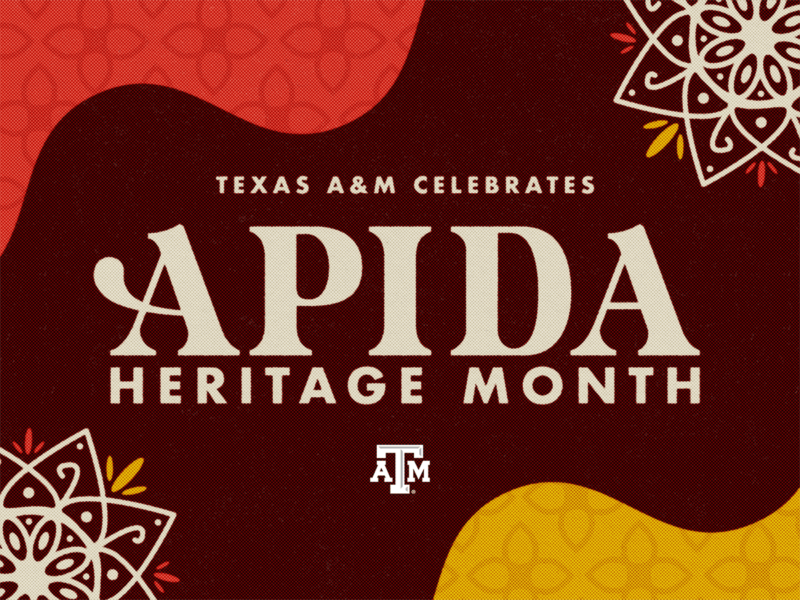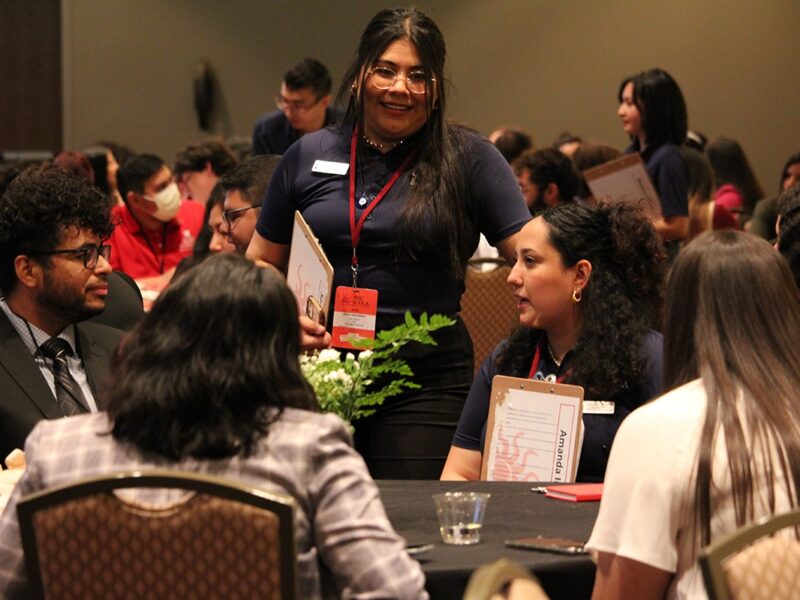An Inside Look At Texas A&M

Members of the A&M Legacy Society visited campus last week for a behind-the-scenes look at Texas A&M University. Nearly 500 supporters and friends of the university attended the annual event on Friday, April 22.
The A&M Legacy Society is composed of individuals, corporations and organizations who donated $100,000 or more in support of the university, or individuals who made provisions in their estate plans for gifts to support Texas A&M. Since the group’s inception in 1989, A&M Legacy Society members have contributed more than $2 billion to Texas A&M. Today, the group has nearly 4,000 members.
After a breakfast at the Foundation’s headquarters, Legacy Society members attended tours around campus. Here is what our guests had to say about their visit to Texas A&M’s campus and all that they learned from the faculty, staff and students who make Texas A&M so special.
Doers, Not Dreamers
A tour of Mays Business School
I enjoyed a very inspiring day at Texas A&M! It was encouraging to me and my wife as donors to see the bright eyes of the students as they work toward making a difference in our world. It looks to me that Eli Jones, the dean of Mays, has that place rocking! The school is attracting new faculty to advance our academic reputation, leveraging scholarships to recruit students with higher merit, and supporting these students with innovative programs like the Business Honors Program and the Center for Ventures and Entrepreneurship. Parents should feel both proud and at ease that their child would want to attend Texas A&M for a degree in business. These students are on track to become leaders for a brighter tomorrow!
—Roy Halamicek Jr

Medicine Of The Future
A tour of the Department of Biomedical Engineering
This tour explored the use of polymers in vascular disease treatment. Dr. Duncan J. Maitland discussed how polymers can be used in the treatment of aneurisms. Student research assistants demonstrated how a polymer can be heated, molded, twisted or pressed into any shape. Once cooled, it retains its shape, yet when it is heated again it would regain its original shape. That characteristic allows a cylinder-shaped foam-like piece about the diameter of a cigarette to be compressed small enough to be inserted into an artery and moved to the opening into an aneurism. Once it has been warmed, it expands to its original shape to form a plug that prevents the flow of blood into the aneurism. After the formation of the clot, the blood vessel heals, sealing the opening into the aneurism. This was very impressive.
During another part of the tour, we visited the motion studies area, in which researchers are investigating how to prevent and respond to slips and falls. Professor Michael Madigan and his students demonstrated their motion studies for us. His team is working on ways to develop interventions for injury prevention.
—Barbara and Bill Huffman ‘53

You Are What You Eat, In Space And On Earth
A tour of the National Center for Electron Beam Research
The National Center for Electron Beam Research is a hidden Aggie gem. Electron beam technology is used to develop vaccines, human and animal foods; treat municipal wastewater; and develop biodegradable plastics. No other university has this type of facility! We were astonished to hear that 80 percent of International Space Station food/for NASA astronauts is made by Aggies. The center can also use its electron beam process to treat 40,000 pounds of ground beef in three hours. This process makes beef stay fresh in your refrigerator for 45 days and does not change the texture, flavor or appearance of the treated product. We tried some fruit that had gone through the process, and you couldn’t tell the difference!
—Sandy and Les Pittman ‘74
The National Center for Electron Beam Research trains students for the real world through their work on things like medical device sterilization and fruit pasteurization. I learned that they are working on ways to develop food that lasts for five to seven years, and they are trying to create vending machines that sell fruit and vegetables.
—Robert Holton ‘84
Cindy and I did not know that Texas A&M had such a facility, or did the kind of work and experiments that they do there. After the tour arrived by bus at the building where the center is located, we were greeted by Professor Suresh Pillai, who is the director of the facility. He then gave the group a tour, showing us first a room where foods are prepared for the International Space Station. He indicated that the foods are prepared and plans are to subject them to the electron beam process to kill all bacteria and/or insects. This process will sterilize the food and keeps the astronauts from getting sick from any foreign organisms in the food. Almost any kind of food can be prepared this way, from lettuce to beef. Dr. Pillai then told us that medical devices—such as artificial joints—can also be subjected to the electron beam process to kill bacteria and make the joints last longer.
We were then taken to another room and shown some fruit from Mexico and Pakistan that is subjected to the electron beam process. This kills any insects or insect eggs in the fruit to keep them from infesting crops in the United States. The fruit would not be able to be brought into the United States market without this process being done. The fruit suppliers pay for this service, and the electron beam facility does this commercial work to have funds available for expenses and research.
—Cindy and Bruce Smith ‘67
The Big Three
A tour of three important Aggie traditions: Aggie Muster, The Big Event & Fish Camp
was very impressed with the enthusiasm and care for incoming freshmen Fish Camp possesses. They really see their roles as not only an introduction to the traditions we all hold dear but as a support group for high school students transitioning to Texas A&M. Some kids may take advantage of this and some may not, but it was refreshing to see how they see their roles. I was sad to learn that some kids cannot participate due to finances.
I was also very inspired by the young folks who dedicate themselves to keeping and running Muster. I attended Muster at Reed Arena last night with my daughters Abigail ’16 and Madeline ’20. It was awesome to share that with them and reinforce that even after we part this earth, we are recognized by our Aggie family.
Because I am a class of 1986, The Big Event was fairly new when I was a student, and I didn’t participate. It really makes me proud to know that over 20,000 students participate in this event as a way to show gratitude to the Bryan/College Station community for “tolerating us for 4 years!” I really think the growth from 10,000 students to over 20,000 participants this year has made this a platform that can be the unifying event campus has been missing since the cancellation of Bonfire.
—Jeff Cranford ‘86
Following the tours, attendees heard a presentation from Texas A&M President Michael K. Young and Texas A&M Foundation President Tyson Voelkel ’96. The session, titled “Philanthropy at the Forefront,” emphasized the value of outside support, particularly scholarship support for students. As the university strives to raise $4 billion for its “Lead by Example” campaign, this portion of the event provided donors the opportunity to direct questions to two of the university’s key players in future fundraising efforts.
As guests enjoyed lunch, they heard a presentation by Texas A&M Foundation Maroon Coat Uli Robles ‘15, who spoke of his experience as a first-generation college student and the importance of donor support in his education. The event concluded with performances by the Singing Cadets and Aggie Yell Leaders.
For more information about the A&M Legacy Society, visit give.am/tamulegacy.
This article originally appeared in The Texas A&M Foundation website.





